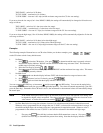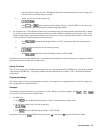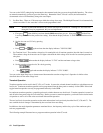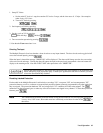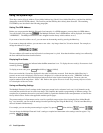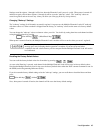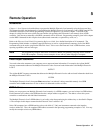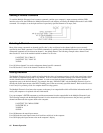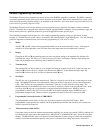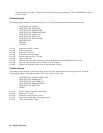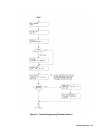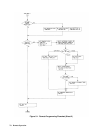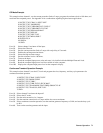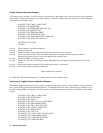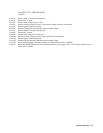
66 Remote Operation
Sending A Remote Command
To send the Multiple Electronic Load a remote command, combine your computer’s output statement with the GPIB
interface select code, the GPIB device (Multiple Electronic Load) address, and finally the Multiple Electronic Load’s HPSL
command. For example, to set the input current of a previously specified channel to 10 amps, send:
Selecting A Channel
Most of the remote commands are channel specific, that is, they are directed to the channel which was most recently
specified by the CHAN command. If no CHAN command was specified since the Multiple Electronic Load was turned-on,
subsequent commands will be directed to channel 1, the default channel. The following example selects channel 2 and
then sets the CV level of the module installed in channel 2 to 20 volts.
10 OUTPUT 705; "CHAN 2"
20 OUTPUT 705; "VOLT 20"
30 END
Line 10: Selects channel 2 to receive subsequent channel specific commands.
Line 20: Sets the CV level of the channel 2 module to 20 volts.
Getting Data Back
The Multiple Electronic Load is capable of reading back the values of parameter settings as well as the actual input voltage
and current or computed input power of any channel. It can also return information relating to the internal operation and
module identification associated with any channel. In order to read back the desired information, you must send the
appropriate query to the desired channel. For example, the query "MEAS:CURR?" asks the Multiple Electronic Load to
measure the actual input current at the INPUT binding posts of the most recently specified channel. Refer to the Electronic
Load Family Programming Guide for complete details on using queries.
The Multiple Electronic Load stores the response to the query in an output buffer which will hold the information until it is
read by the computer or is replaced with new information.
Use your computer’s ENTER statement to read the measurement from the output buffer in the Multiple Electronic Load.
The following example asks the Multiple Electronic Load to measure the actual input current to the previously specified
channel and then reads the response back to the computer.
10 OUTPUT 705; "MEAS:CURR"
20 ENTER 705; A
30 DISP A
40 END
Line 10: Measures the actual input current.
Line 20: Reads the actual input current level back into variable A in the computer.
Line 30: Displays the input current value on the computer’s display



